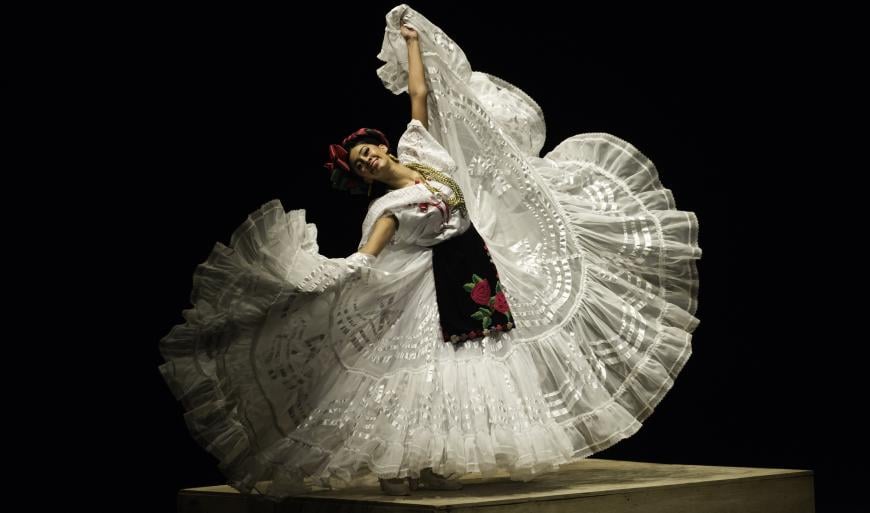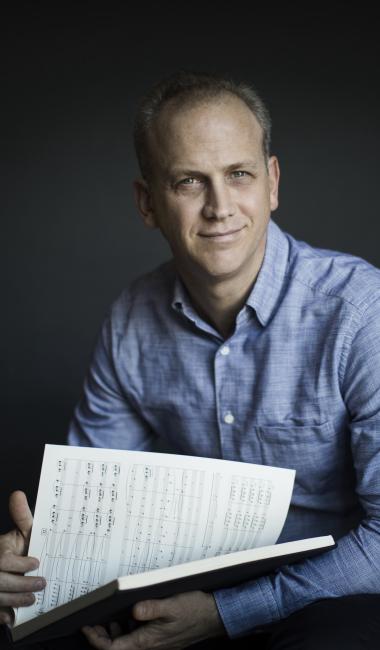
Since its founding in 1952, Ballet Folklórico de México de Amalia Hernández has become one of its country’s most venerated traditional dance companies. It has been awarded, among other honors, the National Prize for Fine Arts by the Mexican government and France’s Legion of Honor and has thrilled more than 45 million audience members.
On July 18, the dance troupe, whose founder died in 2000 at 83 and which is now led by General Director Salvador López López and Artistic Director Viviana Basanta (Hernández’s daughter), makes its long-awaited debut at the iconic Hollywood Bowl. Accompanied by the Los Angeles Philharmonic under the guest baton of Mexican conductor Carlos Miguel Prieto, Ballet Folklórico will perform an array of works guaranteed to raise the temperature in the Cahuenga Pass.
It’s also the Bowl debut of Prieto, who recently led the LA Phil New Music Group as part of the orchestra’s Pan-American Music Initiative. Indeed, the 58-year-old admitted that he’s never even been to the Bowl but that he’s looking forward to working with both the LA Phil musicians and Ballet Folklórico, the latter a group he’s collaborated with for a number of years.

“It was during my 17 years as music director of the Orquesta Sinfónica Nacional de México,” explained Prieto about his history with the troupe. “We depended on the same art institute [Palacio de Bellas Artes in Mexico City] and shared the same home. For this program, I’ve done everything with them before. They really take their stuff very, very seriously.
“It’s a real ballet company,” continued the conductor, who is currently music director of the North Carolina Symphony. “It’s not like a [traditional] folklore company. I [also] know a lot of [Amalia Hernández’s] family. Mexico is small, even though it’s very large,” Prieto added with a laugh.
For the Bowl program, Ballet Folklórico will be dancing to Silvestre Revueltas’s Sensemayá, Arturo Márquez’s Danzón No. 2, José Pablo Moncayo’s Huapango, Agustín Lara’s Danzones de Lara (arranged by Chucho Ferrer), and a surprise encore that will, according to Prieto, “have folks dancing in the aisles.”
The conductor opined. “I think it’s going to be so successful, and the potential is just so huge. L.A. is almost a Mexican city. There’s so [many] Mexican connections that this is universal, too. What I like about this program [is] it puts to rest the idea that Mexico is unilateral. Anyone who goes [to the Bowl] will get music from the north, the south, the center.”
Prieto also stressed the quality of Ballet Folklórico, whose dancers number between 60 and 80. “They take the treasure that is Mexican folklore very seriously and not postcard [cliche] seriously, which is easy to do
“Many companies dance the simple steps,” continued Prieto, “but everything from [Ballet Folklórico] is world class — the designs, the dresses, plus the quality of the dancers. Also, the fact that they really are very demanding on their dancers and on their choreographers. They dance with the same kind of seriousness of purpose and quality as the great ballet companies of the world.”
At the Bowl, Prieto will also lead the LA Phil in Carlos Chávez’s Symphony No. 2 (“Sinfonía india”), as well as works by two living composers, Juan Pablo Contreras and Gabriela Ortiz (the latter helped curate the Pan-American Initiative). Prieto describes Contreras’s Mariachitlán (2016) as “a modern take on the symphonic mariachi world,” while Ortiz’s Antrópolis (2019) is derived from the Mexican term for a bar, nightclub, or “dance salon,” as Prieto translates it.
The conductor claimed he’s premiered more than 100 new works over the course of his career, and when asked what attracts him to contemporary music, he replied: “I’m interested in new movies, new books, new pieces of theater, new music. There are great composers around, and I’m interested in commissioning and premiering new works. I do a lot of Beethoven, Mozart, and Haydn; they’re great, [and] that keeps me alive and well. But new music keeps me young and working hard.”
Prieto hopes the Bowl audience will appreciate “the variety and depth of Mexican music and culture. As a Mexican — and if you had interviewed Amalia when she was alive, she would have told you this herself — [I know] Mexico is much more than what people think and [is] much deeper and much more cultured and vibrant.
“This program, it will have the craziness of mambo and the colors of huapango [a family of Mexican music styles] but the vibrancy of new composers. I want people to [have the] deep respect that we all have for our own cultures.”




